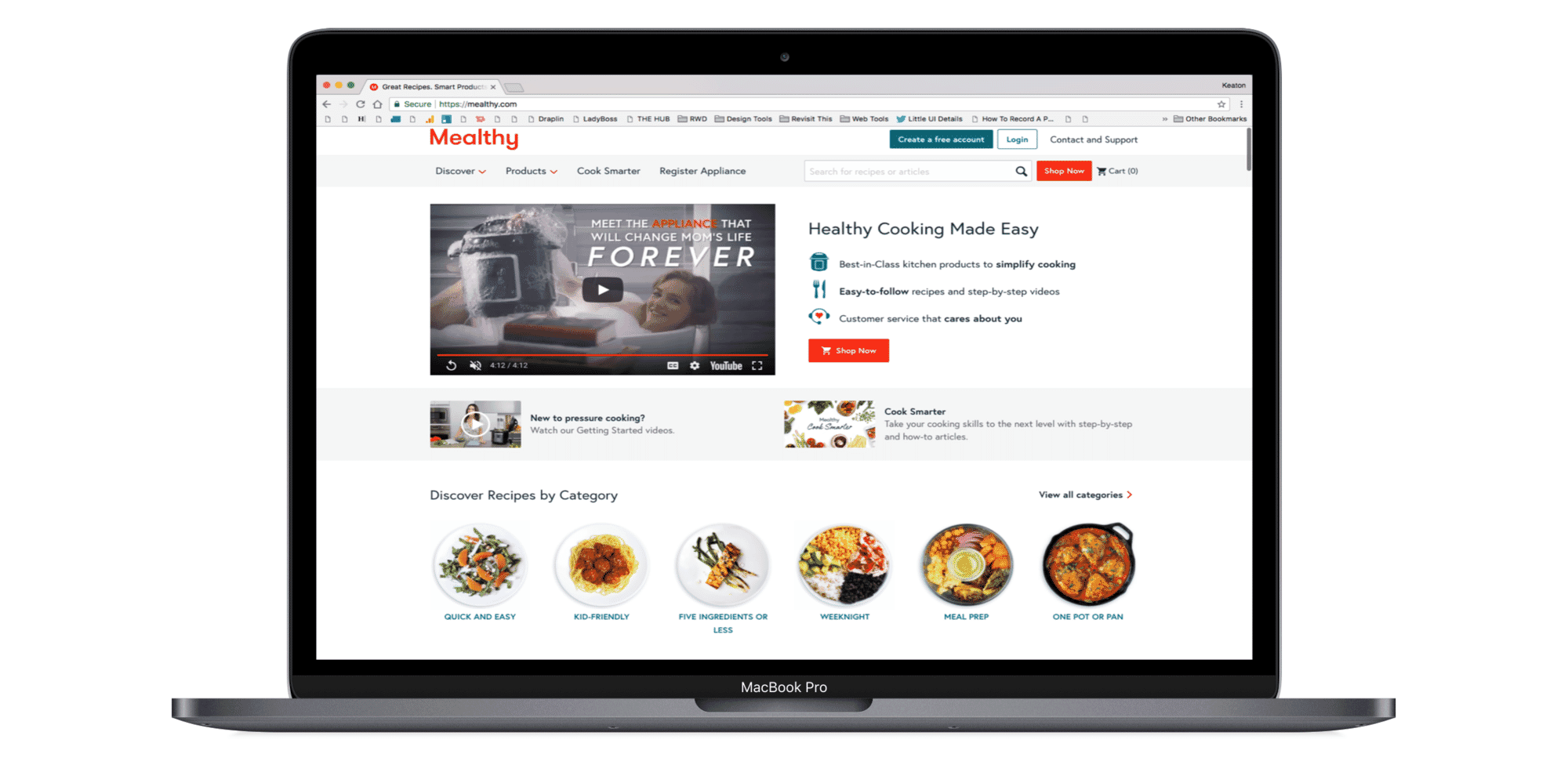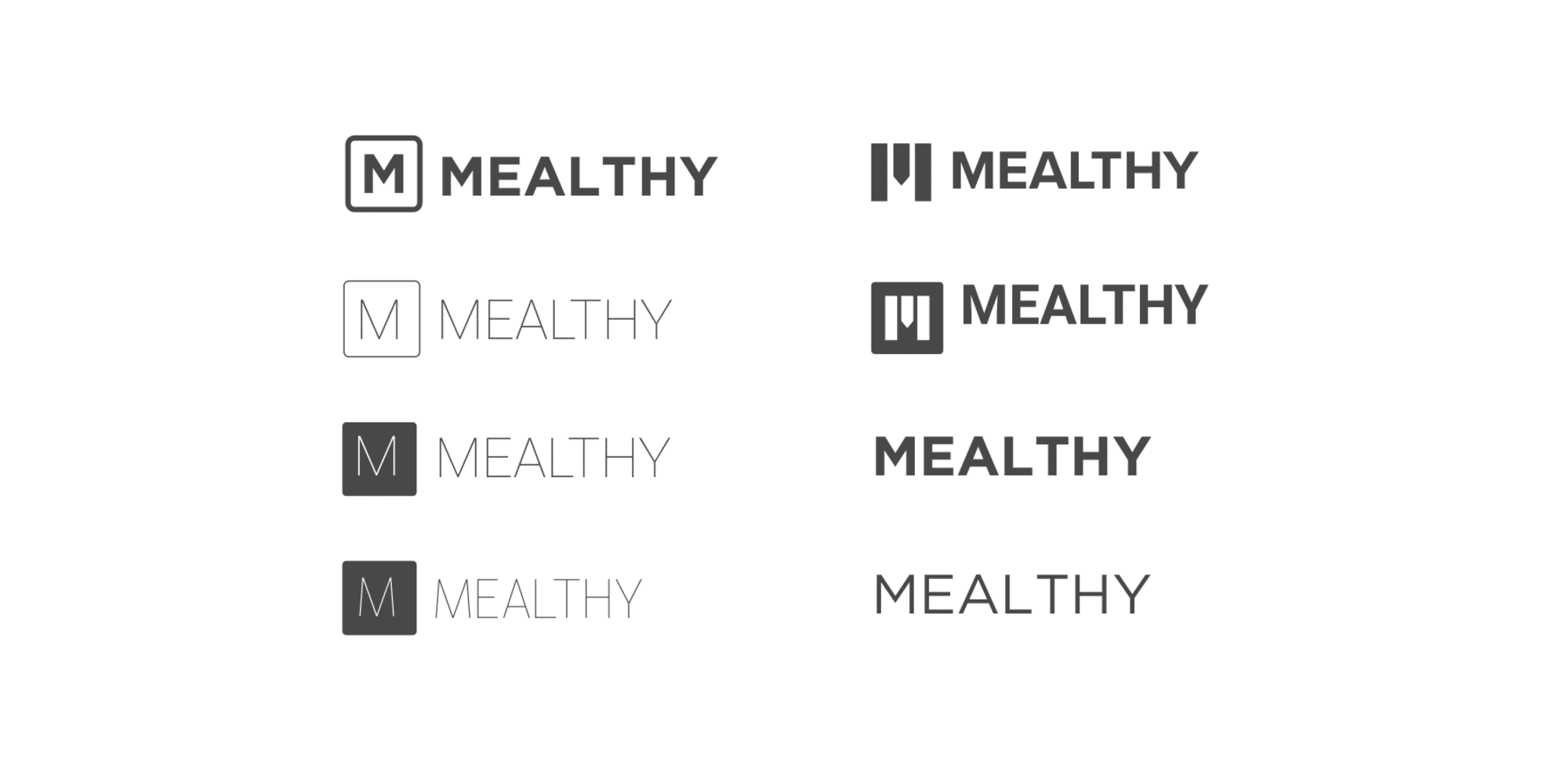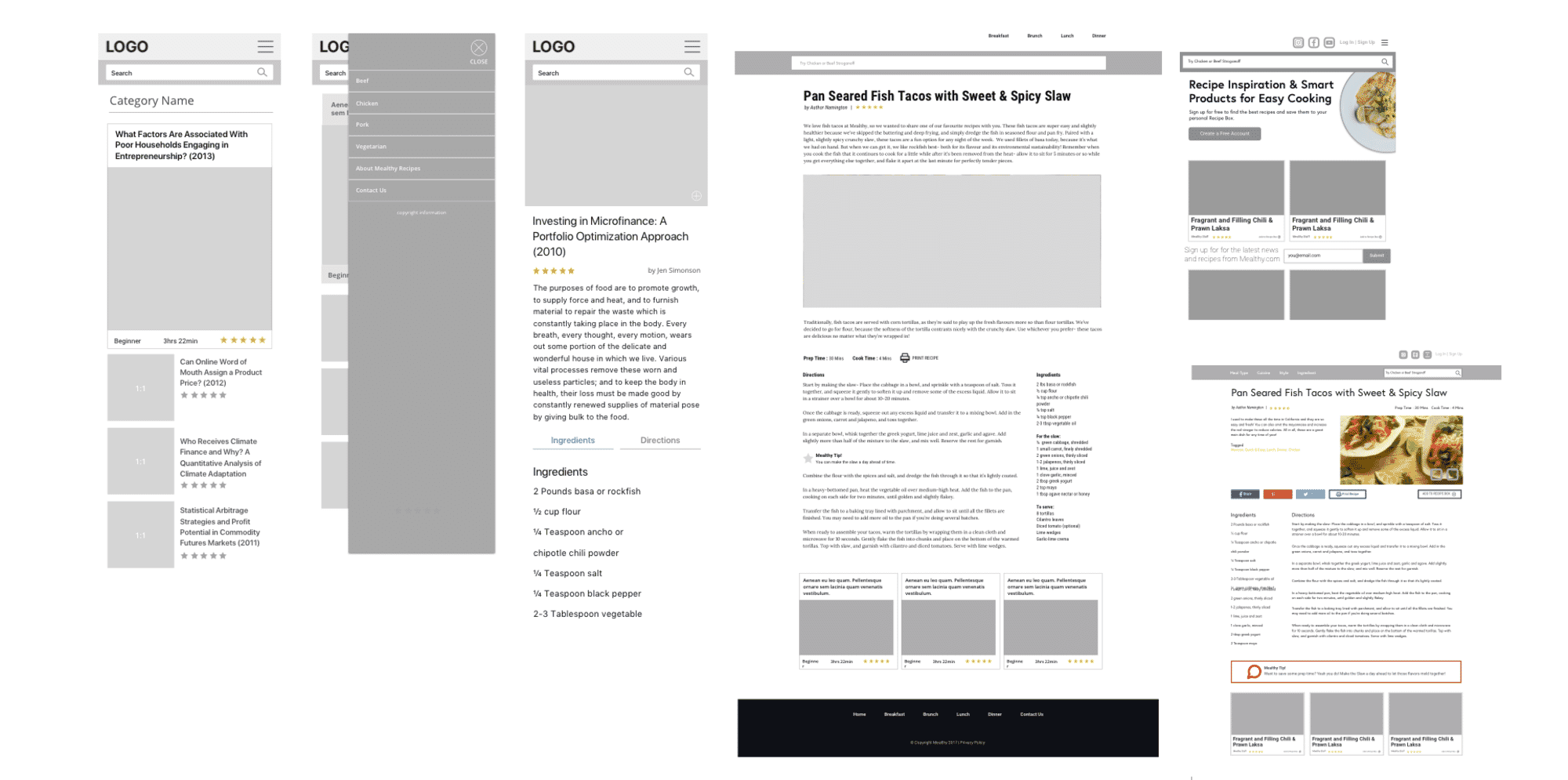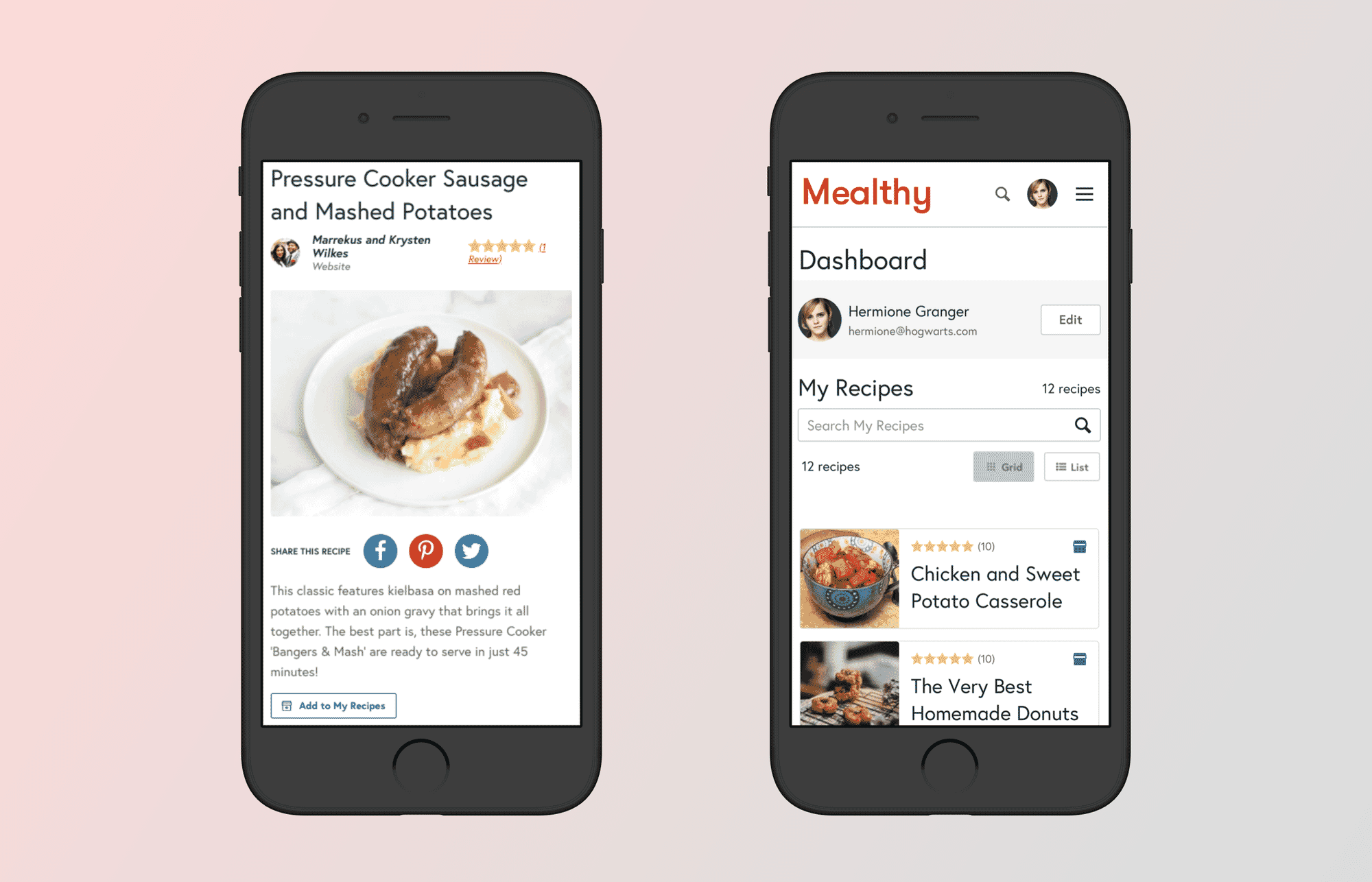

Lead Product Designer / Design manager
2017
2 Product Designers, 5 Engineers
As the founding Product Designer at Mealthy, I not only spearheaded the design team but also temporarily managed engineering. I had a hand in shaping every feature from concept to V1 launch. Navigating the transition from the first designer to design lead came with its challenges, including setting foundational processes and tooling. I strategically chose Sketch and Abstract for design and prioritized hiring multi-skilled designers capable of front-end coding. While some early decisions posed challenges down the line, they were crucial stepping stones for team growth.
Mealthy aimed to create a unique, community-driven recipe platform that focused on user experience over advertising. The goal was to combine an online community with a repository of healthy recipes and kitchen tools, positioning Mealthy as a multichannel product and appliance organization. I was initially aided on this path by an engineering partner and our CEO.
Initial research involved competitive analysis and user demographic studies, working with a business intelligence analyst, a CX contractor, and a TPM from Buzzfeed's recently launched food brand.
Challenges included navigating a saturated market and avoiding the pitfalls of ad-based revenue models. The team also faced the challenge of balancing design, strategy, and implementation. Opportunities included the potential for high user engagement and the ability to create a unique, community-driven platform.
The team hypothesized that a community-driven approach would lead to higher user engagement and that focusing on user experience would set Mealthy apart in a crowded market.
The design process involved Branding explorations, wireframing, user testing, and iterative development. Solutions included recruiting experts from AllRecipes and Buzzfeed Tasty, as well as designing unique kitchen appliances like the Multipot Pressure Cooker.

In collaboration with Customer Experience (CX), we rigorously tested our initial wireframes using Usertesting.com and feedback from friends and family. We even pitted our designs against competitors to validate our approach. By using real content in our wireframes, we eliminated guesswork and streamlined the engineering process, with Ryan focusing on Elixir and React, and myself on markup and SCSS.

Within a month, it became evident that my engineering partner and I were stretched thin across design, strategy, and implementation. To bolster the team, I recruited a senior engineer and our first design hire, an AllRecipes alum. As the de facto design lead, my role expanded to include process development, team management, and CEO reporting. The leadership transition was challenging, prompting me to dive into management literature and seek advice from peers.

Around this period, we collaborated with Treble Apps to transition our web presence to native apps. We were fortunate to have Diana, one of their designers, join us part-time, accelerating our design workflow. Our Senior Engineer, John, stepped into a CTO role. Soon after, we hired another designer, Tim, who quickly tackled front-end bottlenecks. Unfortunately, I also had to make the tough decision to let go of a designer, a challenging moment regardless of the circumstances. This experience was truly a test of my own empathy and mettle as a leader.

As we neared the V1 release following the beta, burnout began to set in due to 60-80 hour workweeks and juggling responsibilities at Mealthy and my day job. Fortunately, our CTO's leadership and additional engineering hires eased production bottlenecks. With designers Tim and Diana handling day-to-day tasks, I started to transition out. After eight months, I stepped back to a consulting role, offering fresh perspectives to the design and engineering teams as needed.
Before Mealthy, I managed retail stores and led QA at a telemarketing firm, but hadn't led in a collaborative tech environment. I immersed myself in leadership books like "Leaders Eat Last" and "The Hard Thing About Hard Things" to understand institutional influence. I encouraged cross-functional teamwork and intentionally hired multi-skilled designers and engineers. This early-stage experience highlighted the importance of speed and iteration but also the risks of proceeding without clear plans.
I bring a strong, passionate voice to any team, always open to being challenged. When I transitioned out of Mealthy, I aimed to set up the design team for success, but recognize there was room for improvement. My departure created a shift in the team dynamics, which temporarily moved design and UX discussions to the background.

While cross-functional skills are valuable, they can also strain a team. One designer felt his role was more about implementation than actual design. This approach can work in short bursts but becomes problematic over time, as it can lead to skill fatigue. Ideally, we would have balanced the team better, hiring more specialized engineers to allow designers to focus on ideation and testing, not just implementation.